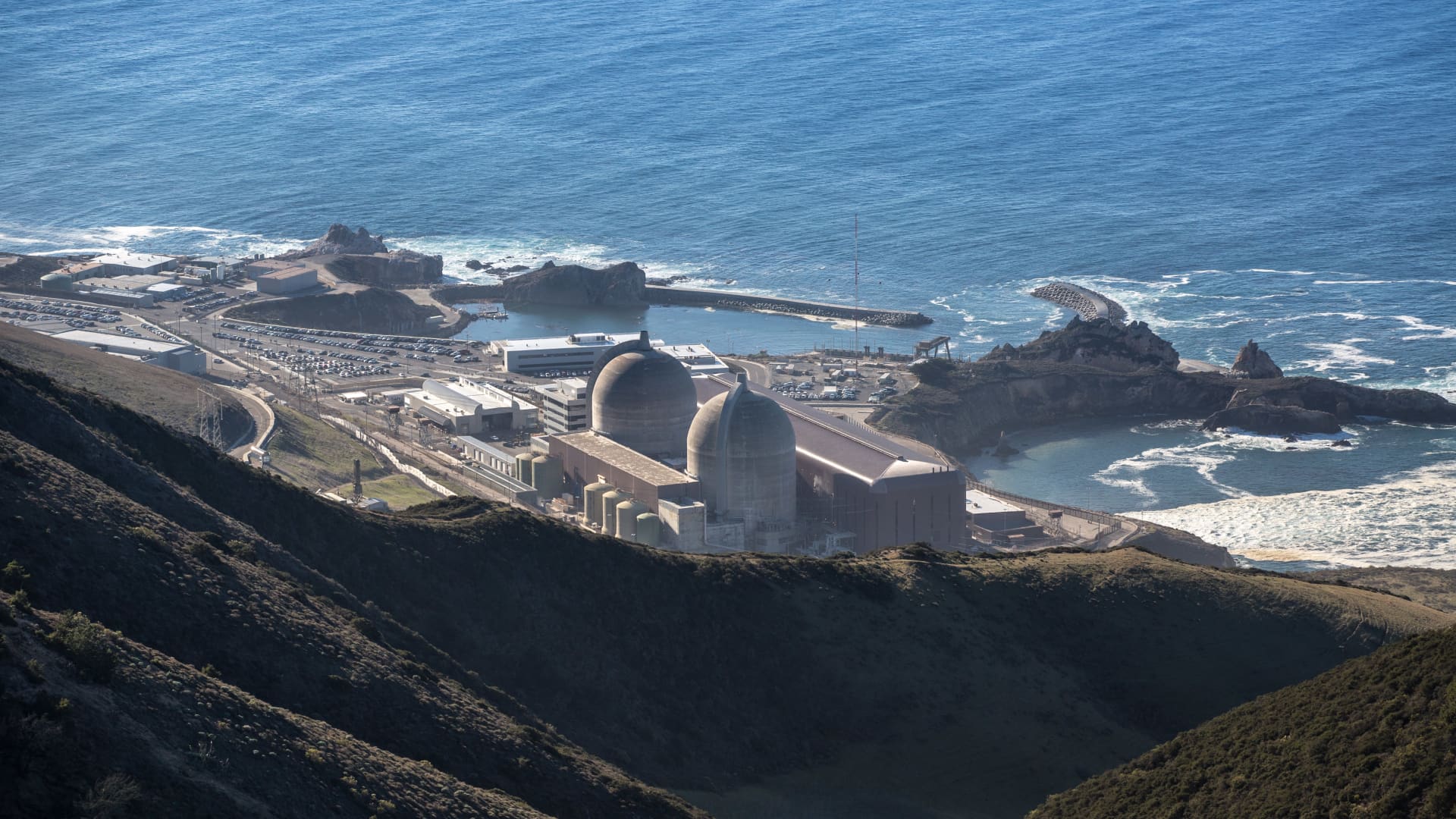California lawmakers vote to extend Diablo Canyon nuclear plant operations as state battles energy emergency


California’s state legislature voted in the early hours of the morning on the last day of the legislative session to give the state the option to keep Diablo Canyon, its last remaining operating nuclear power plant, open for another five years.
The state Senate voted overwhelmingly in favor of the bill, SB-846. The legislation makes it possible for the utility operating the nuclear plant, Pacific Gas and Electric Company, to apply for access to federal funding to keep the nuclear power plant running.
The vote is a reversal of previous plans to shut the nuclear power plant down.
The vote also comes as California is struggling to meet its energy needs. The Diablo Canyon nuclear power plant provides 8.6 percent of the state’s total electricity and 17 percent of the state’s zero-carbon electricity.
On Wednesday, the California Independent System Operator (ISO), the nonprofit organization tasked with maintaining reliable energy on behalf of customers, issued two calls for California residents to reduce their energy consumption to avoid blackouts. The first of these “Flex alerts” asked California residents to conserve their energy use during peak from 4 p.m. to 9 p.m. on Wednesday. The second “Flex alert” issued on Wednesday asked California residents to conserve energy during the same hours on Thursday.
The California energy grid is being pushed to its limits as high temperatures cause residents to use air conditioning, the California ISO said.
Nuclear reactors in the United States are monitored by the federal regulatory body, the Nuclear Regulatory Commission (NRC). Before Wednesday’s vote, one of Diablo Canyon’s reactors was licensed to operate until November 2024 and the second until August 2025. The Senate bill makes it possible for PG&E to apply to keep the two reactors open through October 2029 and October 2030, respectively.
The nuclear power plant was slated to shut down largely due to anti-nuclear sentiment in the state and a preference for building out renewable power sources, like wind and solar.
But sentiment about nuclear power has been changing as the impacts of climate change have become more severe. Nuclear power generation doesn’t release greenhouse gases, the pollutants that cause climate change. The state has struggled to stand up renewable energy sources as fast as it anticipated.
“International supply chain disruptions and delays in bringing new clean energy generation and storage systems online left the state temporarily behind schedule in meeting its renewable energy goals,” a document provided to reporters by the governor’s office stated. And in the text of the legislation, an extension of the life of the nuclear power reactor is called a “stopgap measure.”
On Wednesday afternoon, ahead of the vote, Governor Newsom addressed the energy crisis and indicated it’s necessary to keep Diablo Canyon open.
“For years and years and years, and I would put this in global terms, we — all of us — have been trying to outrun Mother Nature,” Newsom said in a press conference. “But it’s pretty clear that Mother Nature has outrun us. The reality is we are living in an era of extremes, extreme heat, extreme drought” and extreme flooding, Newsom said. California will experience triple-digit weather for the next week, Newsom said.
An extensive extreme drought has decreased the amount of energy California can get from hydroelectricity, Newsom said. And since the rolling blackouts California experienced in August 2020, the state has worked to speed up the “ridiculous and unacceptable” permitting process for standing up renewable wind and solar energy projects, Newsom said.
But despite California’s efforts to ramp up wind, solar energy, and battery storage, the state needs to keep Diablo Canyon online “for a short period of time,” Newsom said.
The legislation includes a $1.4 billion loan from the state to the utility operating the nuclear reactor, PG&E, to pay for expenses required to make necessary capital expenditures required to extend the Diablo Canyon operating license.
The state expects to be reimbursed for the costs associated with this loan with funds from the federal government’s $6 billion Civil Nuclear Credit Program, which was passed as part of the Bipartisan Infrastructure law in November. The $6 billion nuclear program is intended to prop up the existing fleet of nuclear reactors in the United States.
PG&E has to apply for access to the $6 billion in federal funding by Sept. 6, and for the utility to be eligible to make that application, the state had to pass its own legislation before the end of the current legislative session, ergo the late night, last-minute rush.
If the federal government does not approve Diablo Canyon for the federal funding, then PG&E, the operator, “shall return all unexpended and uncommitted loan moneys and the department shall immediately terminate the loan,” the text of the bill reads.
Also, if California Public Utilities Commission, a state’s regulatory office, determines that enough renewable or other zero-emissions energy sources “have come online in sufficient quantity to meet California’s reliability standards, Diablo Canyon will not be extended,” the legislation description from Newsom’s office states.
This post has been syndicated from a third-party source. View the original article here.




